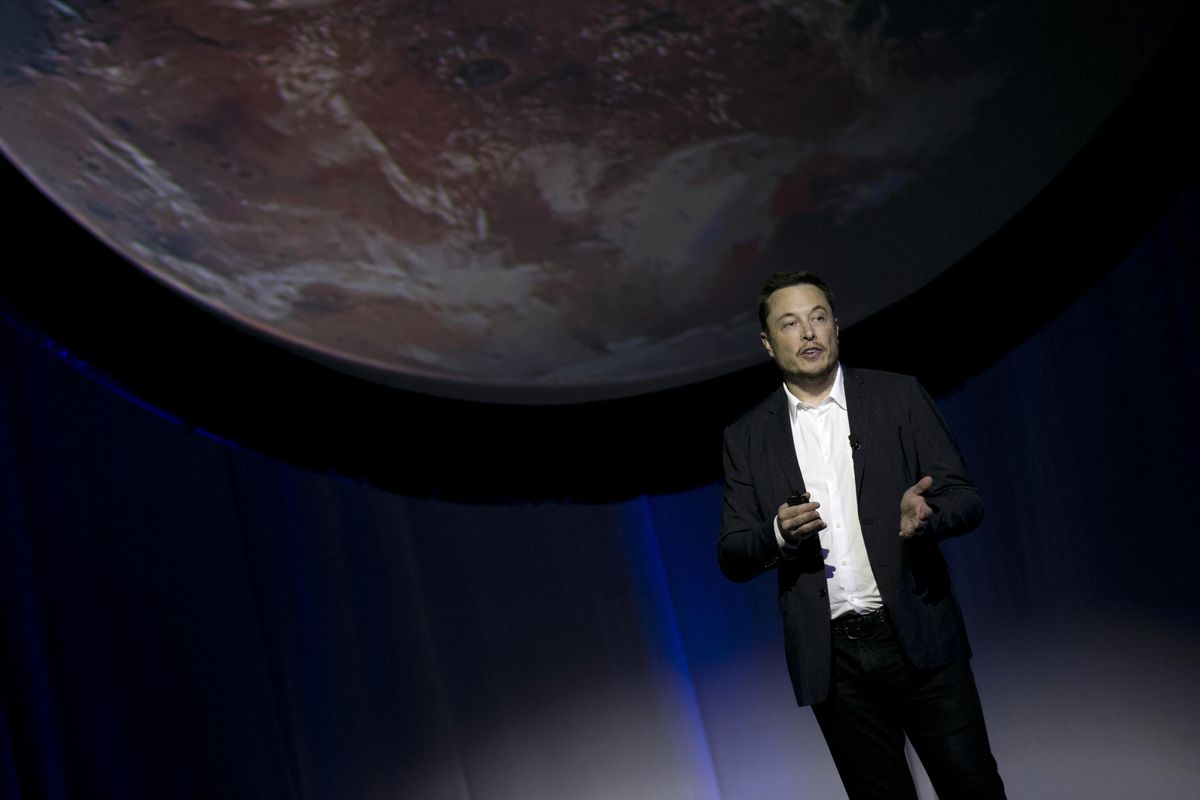Elon Musk unveils plans for colonizing Mars

LOS ANGELES – SpaceX Chief Executive Elon Musk on Tuesday unveiled his plans for colonizing Mars, which could eventually involve a fleet of up to 1,000 spaceships to transport as many as 1 million people to the Red Planet.
Musk envisions continuous launches from Earth, with massive rockets returning for reuse and spacecraft refueling in a “parking” orbit around Earth. The spacecraft, carrying as many as 100 people, would fly on their own to Mars. They would return using a combination methane and liquid oxygen fuel mined from Mars.
Speaking to the International Astronautical Congress in Guadalajara, Mexico, Musk said he hoped to reduce the per person cost of getting to Mars from $10 billion, the price using “traditional methods,” to close to $200,000.
The total cost for SpaceX to develop the interplanetary transport system could be $10 billion. The entire project would cost much more and would probably require a public-private partnership, Musk said.
Musk said the Los Angeles-area company currently is spending less than 5 percent of its resources on the Mars system. But in a year and a half to two years, Musk said, most of SpaceX could be working on the project and the company could spend about $300 million a year on it.
In a tweet before the speech, which was titled “Making Humans a Multiplanetary Species,” Musk said the rocket booster for his interplanetary transport system will measure about 39 feet in diameter, and the spaceship will be about 55 feet in diameter.
When the two are stacked on top of each other, the total height will be about 400 feet. That is taller than the Saturn V rocket that carried the Apollo astronauts to the moon in the 1970s, and the SpaceX rocket would have nearly four times as much thrust.
On Sunday night, Musk tweeted that SpaceX had conducted its first test firing of the Raptor interplanetary transport engine.
He said the spacecraft might fly within four years, with development of the full Mars transport system several more years down the road.
In April, SpaceX said it was planning to send an unmanned Dragon spacecraft to the Mars as early as 2018. That mission, known as Red Dragon, will get some technical support from NASA, which has said it is interested in the entry, descent and landing data. Musk said the company wants to send a “steady cadence” of Dragon spacecraft to Mars.
Musk has said a crewed mission to Mars could launch in 2024 with arrival on Martian soil in 2025. But on Tuesday, he said that if things go well, the time frame could be more on the order of 10 years.
Tuesday’s speech came almost a month after a SpaceX Falcon 9 rocket exploded on a launch pad in Florida while being fueled before a standard pre-launch test. The blast also destroyed a communications satellite the rocket was supposed to lift into orbit.
Last week, SpaceX said a preliminary investigation found that a “large breach” occurred in the helium system of the rocket’s second-stage liquid oxygen tank, and that it was looking into “all plausible causes.”